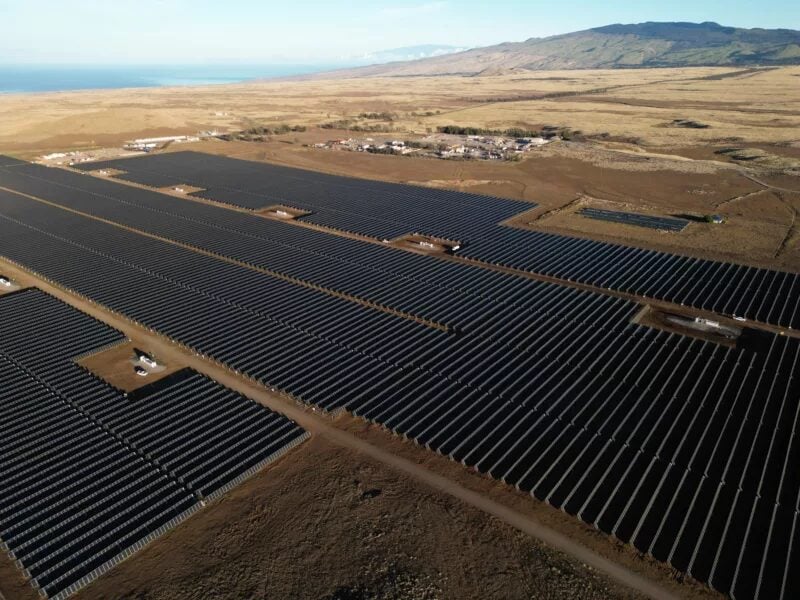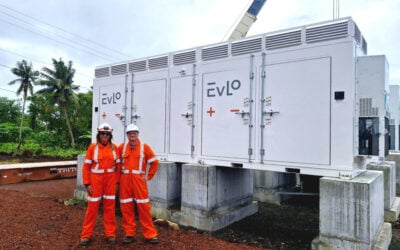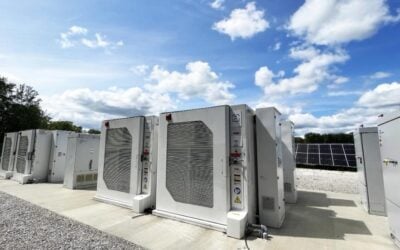
Independent power producer (IPP) Innergex Renewable Energy’s 30MW/120MWh Hale Kuawehi battery energy storage system (BESS) project has reached commercial operations.
The project, located on Hawaii island, combines 30MW of solar PV with the 4-hour BESS.
Enjoy 12 months of exclusive analysis
- Regular insight and analysis of the industry’s biggest developments
- In-depth interviews with the industry’s leading figures
- Annual digital subscription to the PV Tech Power journal
- Discounts on Solar Media’s portfolio of events, in-person and virtual
Or continue reading this article for free
Energy-Storage.news previously reported Innergex’s closing of a US$100 million bridge loan for the Hale Kuawehi BESS in December 2024.
The IPP secured the loan with First Citizens Bank to support the BESS project through what the company said would be its final stages.
Electricy produced by the Hale Kuawehi project is set to be sold under a 25-year power purchase agreement (PPA) with Hawaii Electric Light Company (HECO).
HECO’s 2024 Clean Energy Portfolio
HECO reported that its renewable energy generation in 2024 totalled 10,311GWh.
Hawaii Island had the largest share of that generation, with 58.7%, Maui County followed with 41.1% and Oahu with 30.8%.
In terms of renewable energy, the greatest share is coming from customer-sited, grid-connected renewable solar and wind, making up 45.8% of the total GWh produced in 2024, the next highest being wind with 18%.
In terms of total system generation mix, oil is still taking the majority share. On Hawaii Island, oil made up 41.3% of the fuel used to generate electricity. Geothermal made up 19.1% and customer-sited, grid-connected renewables such as rooftop solar made up 18%.
HECO renewable project status
Hale Kuawehi is the first project in service for HECO since June 2024, when the 42MW/168MWh Kupono solar-plus-storage project came online.
Multiple projects have been approved by regulators, one of which is Hoohana Solar 1, a 52MW/208MWh project from Hanwha’s 174 Power Global.
The largest approved project comes from AES Corporation. The Waiawa Phase 2 30MW/240MWh solar-plus-storage project, which has an estimated completion of 2025.
AES has a history with HECO. In June 2024, AES withdrew one of its solar and battery storage projects from a HECO procurement (Premium access article).
The withdrawn projects were a part of 2.1GWh of combined energy storage projects that HECO entered into contract negotiations for, as reported by Energy-Storage.news in December 2023.
There are also 11 projects in negotiations listed on HECO’s website; several of these are solar and storage projects, though storage amounts have not been revealed.
Innergex project ITCs
As part of the bridge loan announcement, Innergex also noted that the project would be eligible to receive a federal Investment Tax Credit (ITC) sized to approximately 30% of the project’s eligible costs.
As of 2022, the Inflation Reduction Act (IRA) broadened access to ITCs to include standalone energy storage, whereas previously, only energy storage systems installed with and charging from solar PV systems were eligible.
Additionally, before the IRA, ITCs could only be used by setting up complicated tax equity joint ventures to invest in the project.
The IRA introduced a new way to sell ITCs through ‘transferability’ (Premium access article), allowing developers to sell ITCs associated with clean energy projects to another company in exchange for funds.
The beginning of Donald Trump’s second term as US president has brought a slew of changes and uncertainties surrounding clean energy industries.
The president’s executive order on “Unleashing American Energy” announced plans to revoke an executive order on the “Implementation of the Energy and Infrastructure Provisions of the Inflation Reduction Act (IRA) of 2022.”
While the implications of this order and the administration’s ability to change the IRA in part or in full are still not fully known, some voices in the industry have been raising awareness of the potential danger that the IRA and its tax credits face.
ESN Premium recently spoke with Consultancy Clean Energy Associates’ senior policy analyst Christian Roselund (Premium access article), who said:
“Everything is still highly uncertain, but our base case is that there is a phase-out of the 48E ITC and the 45Y PTC overall as of the end of 2025. Those are the technology neutral tax credits for projects that begin construction on or after 1 January, 2025.”
There also remains a very low likelihood that energy storage projects which started construction before 2025 will be affected by a repeal or phase-out of these tax credits.
While projects like Hale Kuawehi, which started construction prior to 2025, may have a much lower risk of tax credits being repealed, uncertainty remains in the industry.
Innergex has three other BESS projects currently listed on its official website, two are located in Chile and one is in France.
In Chile last year, alongside developer Prevalon Energy, it agreed to nearly double the BESS capacity at two sites in the country with existing operational facilities.
Those sites being the company’s first BESS in the country, the 50MW/250MWh Salvador BESS commissioned in October 2023, and the 35MW/175MWh San Andres BESS.






